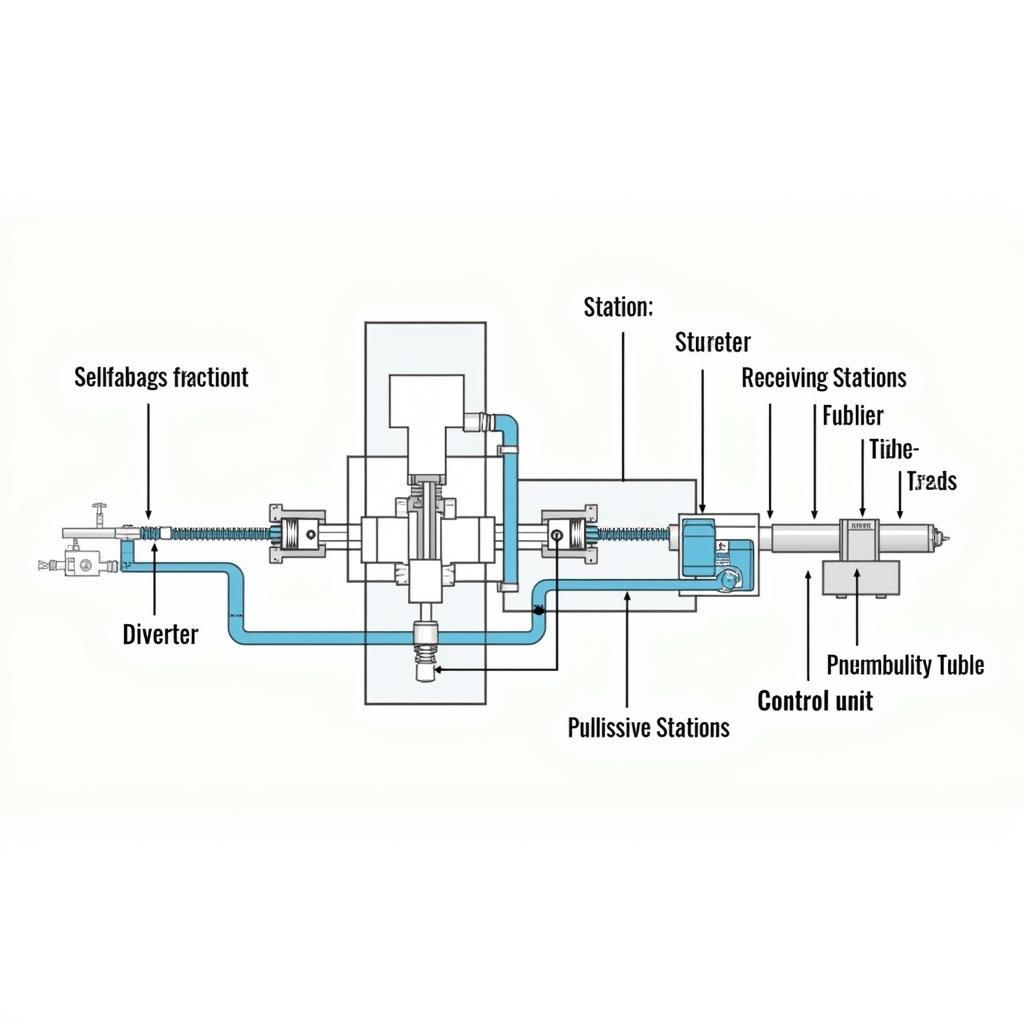Understanding the costs associated with a pneumatic tube system for your hospital can feel like navigating a maze. There are many factors to consider, from installation and equipment to ongoing maintenance and potential upgrades. This comprehensive guide will break down the complexities of Pneumatic Tube System Hospital Costs, empowering you to make informed decisions for your healthcare facility.
Factors Influencing Pneumatic Tube System Costs
The price tag on a pneumatic tube system for hospitals can vary significantly. Here’s a closer look at the key elements that influence the overall cost:
- System Size and Complexity: As you might expect, a larger, more extensive network of tubes covering a sprawling hospital campus will cost more than a smaller system designed for a compact facility. The number of stations, tubes, and the sophistication of the routing mechanism all play a role in determining the final price.
- Station Types and Quantities: Pneumatic tube systems offer various station types, each tailored to specific needs. From simple send/receive stations to more specialized units designed for labs or pharmacies, the type and quantity of stations you require will directly impact the overall cost.
- Tube Material and Technology: Pneumatic tube systems utilize different materials for the tubes themselves, each with varying price points. Factors such as durability, speed, and the ability to transport sensitive materials all come into play when considering the tube material, ultimately influencing the total cost.
- Installation Requirements: The complexity of installation, including factors like building layout, existing infrastructure, and the need for specialized construction, can significantly influence the overall cost. Retrofitting an older building to accommodate a pneumatic tube system is likely to be more expensive than incorporating it into a new construction project.
- Integration with Existing Systems: Seamless integration with your hospital’s existing systems, such as electronic health records (EHR) or laboratory information systems (LIS), may require additional software and customization, impacting the final cost.
 Pneumatic Tube System Components Diagram
Pneumatic Tube System Components Diagram
Breaking Down the Cost Components
To provide a clearer picture, let’s break down the typical cost components of a pneumatic tube system for hospitals:
- Equipment Costs: This includes the price of the pneumatic tube stations, tubes themselves, diverter units that direct carriers throughout the system, and the central control unit managing the entire operation.
- Installation Costs: Installation involves the physical setup of the system, including laying tubes, connecting stations, and integrating the system with your hospital’s infrastructure. Labor, construction materials, and any necessary modifications to your building will factor into the installation expenses.
- Maintenance and Operational Costs: Like any sophisticated system, pneumatic tube systems require ongoing maintenance to ensure smooth and reliable operation. This encompasses regular inspections, cleaning, part replacements, and potential repairs. Operational costs include energy consumption for powering the system.
Return on Investment (ROI) Considerations
While the upfront costs of a pneumatic tube system are undeniable, it’s essential to consider the potential return on investment (ROI).
- Enhanced Efficiency and Productivity: By rapidly transporting specimens, medications, and documents, pneumatic tube systems can significantly reduce delivery times, minimize manual transport efforts, and free up staff for more critical tasks.
- Improved Patient Care: Faster delivery of essential items like blood samples and medications translates to quicker diagnoses, more efficient treatment, and ultimately, improved patient outcomes.
- Reduced Errors and Increased Safety: Automated transport via pneumatic tubes minimizes the risk of human error associated with manual handling, improving the accuracy and safety of critical deliveries.
- Cost Savings: While the initial investment might seem substantial, the long-term cost savings from increased efficiency, reduced waste, and potentially fewer staff hours can outweigh the upfront expenditure.
 Hospital Staff Utilizing Pneumatic Tube System
Hospital Staff Utilizing Pneumatic Tube System
Financing and Leasing Options
Financing and leasing options can make acquiring a pneumatic tube system more manageable. Many manufacturers and vendors offer financing plans tailored to your hospital’s budget, spreading the cost over time. Leasing can be an attractive option, providing flexibility and often including maintenance costs within the lease agreement.
Choosing the Right System for Your Hospital
Selecting the optimal pneumatic tube system for your hospital involves careful consideration of your facility’s unique requirements:
- Needs Assessment: Conduct a thorough assessment of your hospital’s transportation needs, including the types of materials transported, frequency of deliveries, and the distances covered.
- Scalability: Factor in potential future growth and expansion plans. Choose a system that can adapt and scale to accommodate your evolving needs, preventing the need for a complete system overhaul down the line.
- Vendor Selection: Research and compare reputable vendors with a proven track record of providing reliable and efficient pneumatic tube systems. Look for vendors offering comprehensive support, including installation, training, and ongoing maintenance services.
Conclusion
Investing in a pneumatic tube system is a strategic decision for modern hospitals looking to optimize operations, enhance patient care, and streamline workflows. While pneumatic tube system hospital costs vary based on specific needs, the potential long-term benefits in efficiency, safety, and cost savings make it a worthwhile investment. Carefully assessing your hospital’s needs, exploring financing options, and choosing a reputable vendor are crucial steps in making an informed decision that aligns with your facility’s goals and budget.